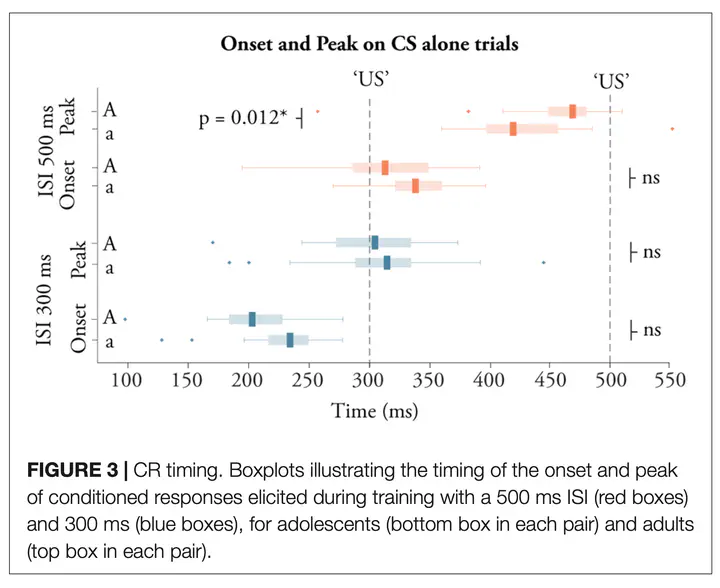 Image credit: Frontiers in Behavioral Neuroscience
Image credit: Frontiers in Behavioral Neuroscience
Abstract
Eyeblink conditioning is a simple form of learning to study the neural mechanisms underlying learning and memory. This study demonstrates that a longer interstimulus interval (500 ms) yields better learning outcomes in young adolescents and adults compared to a shorter interval (300 ms). The findings contribute to understanding cerebellar development and its implications for learning.
Type
Publication
Frontiers in Behavioral Neuroscience, 12(299)